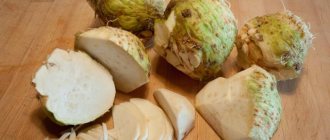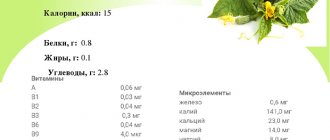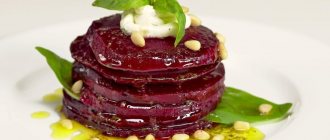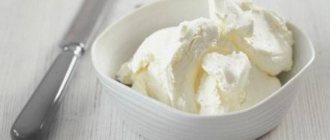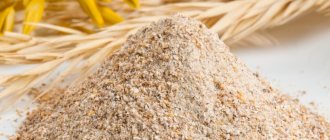Beneficial properties of passion fruit
Passion fruit originates from Brazil, but today it is also supplied by Australia and South Africa. The fruit is not very common in our supermarkets, but you can buy puree from it almost everywhere.
Both the fruits themselves and the interestingly shaped passion fruit seeds are eaten. They are often used to decorate various puddings, pies, and cookies. The most common culinary "forms" for consuming passion fruit are jelly, puree or soufflé, and juice.
Passion fruit is considered one of the sources of phytoenzymes. These are substances almost identical to natural enzymes of the digestive tract. They help improve digestion and more complete absorption of the product. In the countries where it grows, passion fruit is considered an excellent... side dish for meat, as it activates the process of protein absorption.
In folk medicine, the fruits are recommended for everyone who has problems with constipation and intestinal atony, as well as with too slow digestion. Naturopathic sources recommend chewing fruit on an empty stomach to relieve digestive problems.
Basically, like all other high-fiber fruits, passion fruit can help your gut. It is also considered an excellent dietary fruit for those who are losing weight. This is because:
- Passion fruits, rich in phytoenzymes, help smooth out specific digestive problems that arise when following a diet low in carbohydrates and rich in proteins;
- fruits help diversify your diet and prevent you from inadvertently stuffing yourself with all kinds of confectionery products;
- For many people, the characteristic sweet and sour taste and rich aroma of passion fruit help correct appetite.
If you read the information on the Internet, you can conclude that passion fruit is another “cure for everything.” It is used for migraines and kidney diseases, for obesity and liver diseases, and as a general tonic for those whose immunity is reduced.
It is often recommended to eat passion fruit for diseases of the genitourinary system. It has both a mild diuretic and moderate anti-inflammatory effect.
Passion fruit seeds are a source of iodine and iron; they help correct metabolic disorders, and their extract is often added to various products for losing weight.
Passion fruit pulp is a source of vitamin A and ascorbic acid. The product also contains tocopherol; the combination of vitamins A and E in passion fruit allows it to be considered a real assistant in preserving beauty and youth. These two substances together have a powerful anti-aging effect.
In the “folk” branch of cosmetology, creams and masks based on passion fruit are used for rejuvenation. However, there are several products from quite large and well-known cosmetic brands with this fruit.
The use of passionflower in cooking and dietetics
The fruits can be eaten fresh, but you need to know how to eat passion fruit correctly. It is enough to carefully cut the fruit in a circle and quickly divide it into 2 halves to preserve the juice. Then take out the aromatic pulp with a spoon and eat it.
Article on the topic: Duck baked in the oven with potatoes
- The seeds are often used to decorate cakes and other desserts.
- The pulp is used as a filling for sweet pies or an ingredient in fruit salads and smoothies.
- The crushed pulp is often added to sauces, mousses, yoghurts, creams, ice cream and even cheesecakes.
- The high juice content of the fruit makes it ideal for quenching thirst and toning the body in hot weather.
In Australia, this fruit is sold not only fresh, but also canned, which is quite convenient, since the fruit is not stored for a long time.
The maximum storage time is 5-6 days (in the refrigerator).
You can extend it by freezing - put the pulp in a plate, mix with sugar and put it in the freezer. So it can be stored for 12 months without losing its properties.
Many exotic fruits undergo serious antibacterial treatment, otherwise they simply will not survive long-term transportation. Therefore, before eating, the fruits must be washed and thoroughly cleaned.
You can take note of the recipe for a simple cottage cheese casserole. Ingredients:
- 275 g of fat and low-fat cottage cheese;
- 0.5 tbsp. Sahara;
- 1 egg;
- 3 passion fruits;
- 2 tbsp. l. starch.
Cottage cheese must be mixed with sugar and egg. Squeeze the juice out of the fruit and combine with starch. The seeds can be set aside for decoration. Mix all ingredients, place in pan and bake for 30 minutes. If desired, the dessert can be decorated with seeds and butter cream.
Nutritionists often recommend this fruit to people who want to lose weight. It can be safely included in the diet due to its minimal fat content. In addition, the fruit has a beneficial effect on metabolism, giving a boost of energy and vigor.
The properties of passion fruit have made it quite popular even in official medicine. This applies to therapeutic diets for various diseases. For colds, it is prescribed as an antipyretic, and for gastrointestinal diseases - as a laxative.
Where to buy and how to choose passion fruit
Passion fruit is sold in large supermarkets; you should choose smooth, uncrumpled fruits without visible brown and red spots. Passion fruit is usually sold almost individually, so you should choose the option where you can examine the fruit from all sides.
Passion fruit puree should be taken natural, unpasteurized. There are several brands that make purees in vacuum packaging, check them out. The juice of this fruit is packaged in glass bottles, almost like pomegranate juice. The country of origin for the highest quality juice is Brazil. Sometimes you can buy it at the pharmacy, next to acai and noni juices.
Passion fruit syrup
Passion fruit syrup contains water and a certain percentage of sugar (approximately 40 - 80%).
Most often, syrup is used in cocktails, since the drink goes well with both alcoholic and non-alcoholic drinks. The syrup goes well with alcohol such as:
- vodka;
- Campari liqueur;
- white rum.
The syrup is excellent as a digestif and served immediately after a meal as a final dessert. For non-alcoholic drinks, syrup can be mixed with pineapple juice and still water.
The drink is completely free of alcohol, and therefore children can drink it without any restrictions. Contraindications for use are diagnosed diabetes and an individual reaction to the composition of the syrup.
In general, passion fruit syrup improves digestive processes, tones the body and increases performance.
Passion fruit oil
Passion fruit oil is also known as passionflower oil or extract. This is a product widely used in cosmetology for hair and face care. There are several well-known skincare products containing passion fruit oil, including the popular Planeta Organica line. This oil is believed to moisturize and protect the skin, nourish the hair roots and promote hair growth.
You can also find pure passionflower (passion fruit) oil in pharmacies. In addition to the above, it is used for body massage. They often began to write that the product removes stretch marks in a matter of days. Unfortunately, not a single useful (or useless) oil or cosmetic product can remove “old” stretch marks. In fact, passionflower oil can only offer skin hydration and nourishment with vitamins A and E.
Exactly the same can be said about the rejuvenating effect. No cosmetic can turn back the clock entirely; the product will only improve the condition of the skin by superficially moisturizing the epidermis.
Passion fruit in home cosmetology
The benefits of passion fruit for women are not limited to taking it internally. Due to the rich content of fatty oil obtained from the fruit, the properties of passion fruit are often used in cosmetology. Passion fruit oil is rich in essential acids, vitamins, and antioxidants. Its benefits in the fight against problematic facial skin, hyperfunction of the sebaceous glands, and early aging are enormous.
The beneficial properties of creams, lotions, foams, and face masks prepared on such an oil basis provide an anti-inflammatory effect, revitalize tired skin, fight an increased tendency to fat formation, nourish, and saturate it with health.
Face masks
The beneficial properties of passion fruit for the face are due to the oils contained in the seeds. They contain vitamins, carotenoids, bioflavonoids, and unsaturated fatty acids in abundance.
- For the purpose of lifting, it is recommended to prepare a mask: take passion fruit and banana pulp in equal quantities, add half the dose of almond oil and starch. Mix everything well and apply to cleansed facial skin.
- A refreshing vitamin mask can be made from 3 tablespoons of passion fruit, 1 tablespoon of avocado, 1 teaspoon of oatmeal and honey.
- To obtain a whitening effect, mix 10 g of passion fruit oil, a tablespoon of pure yogurt and a teaspoon of parsley juice.
We recommend reading: Grapefruit juice: benefits and harm
Hair masks
Passion fruit oil has a beneficial effect on hair. Its benefits include restoring their damaged structure, adding shine, facilitating combing, normalizing the processes of sebum formation, and combating split ends and breaking off.
Passion fruit oil is included in many masks. The so-called Brazilian version is interesting: mix passion fruit oil, rice oil, and acai oil in equal parts. When heated, apply to the roots of the hair and distribute throughout the entire volume. To increase the effect, wear an insulating cap.
It is recommended to simply rub passion fruit oil into your hair when you are about to dry it with an electric hairdryer or spend a long time under the scorching rays of the sun. It will protect the structure from overheating and protect from drying out.
Recipes with passion fruit
Protein muffin with strawberries and passion fruit
2 scoops vanilla complex protein, 200g each strawberries and passion fruit, tbsp sesame seeds, 1 egg, 1 tbsp coconut flakes, 2 tbsp oat or wheat bran for baking (this is a lighter bran with grain pieces, it doesn't look brownish dust), a cup of almond milk + another 1 tablespoon of this product and a little sweetener (about 150 ml, if you don’t have nut milk, you can use regular milk).
Mix vanilla complex protein with almond milk until it reaches the consistency of thick pancake batter. Beat the egg and add to the mixture. Cut the fruit as you like. Add bran to the dough and mix thoroughly so that there are no lumps. Next, both types of cut fruits are added to the dough, but there is no need to beat, just mix with a fork or whisk. Pour the mixture into a silicone mold and bake in the microwave at 600 W for about 14 minutes. Sprinkle the finished cake with a mixture of coconut flakes and sesame seeds, after sprinkling a little nut milk mixed with sweetener.
Curd dessert with passion fruit
1 kg of creamy low-fat cottage cheese, 2 packets of gelatin, lime or lemon juice, 200-300 g of passion fruit, cinnamon, vanilla, sweetener to taste, 1-2 tablespoons of bran and a cup of any nut milk, such as almond.
Rub the cottage cheese through a sieve or grind with a blender. Turn the passion fruit into a puree with lime juice, season with cinnamon, and maybe sweeten it a little. Allow the bran to swell in a cup of almond milk. Dissolve the gelatin according to the instructions (if you need to soak it, first soak it for half an hour and then dissolve it, you will find this information on the package). Mix half of the gelatin with cottage cheese and sweetener, and the other half with the base of milk and bran. Take two molds of the same diameter. Place a mixture of gelatin mass with bran at the bottom of the first and leave in the refrigerator for half an hour. In the second layer, collect the cottage cheese and passion fruit puree and cool in the same way. When the mixtures have hardened, carefully remove the curd “pie” and place it on the bran base.
Tropical smoothie with nut milk
A cup of cashew milk or almonds, 2 pieces each - passion fruit, banana, peach, plus 200 g pineapple cubes for decoration.
Mix all fruits except pineapple in a blender with cashew milk, you can add cinnamon and sweetener if desired. Distribute pineapple cubes evenly among portions and serve in tall glasses.
Seafood appetizer with passion fruit puree
200 g passion fruit puree, a kilogram of peeled shrimp, a clove of garlic, olive oil, salt.
Boil the shrimp by immersing them in boiling water and drain in a colander. Mix the passion fruit puree with the rest of the ingredients and add the sauce to the seafood. You can serve this dish with ruby or brown rice.
Oat cookies
200 g passion fruit puree, a glass of rolled oatmeal, 5-6 egg whites, stevia sweetener, coconut flakes, a tablespoon of cream cheese.
Make a dough from egg whites, cottage cheese and half of the mashed potatoes with oatmeal. Place portions of cookies on a parchment-lined baking sheet with a spoon and cook in the oven at 180 degrees for about 30-40 minutes. Mix the coconut flakes with the remaining passion fruit puree, and add a little pectin or jam thickener to the mixture. Glue the cooled cookies together with a 1 to 1 mixture.
Sashimi with passion fruit
300 g each eel, tuna, salmon, 200 g passion fruit puree, juice of 2 limes or rice vinegar, low-salt soy sauce, sesame seeds, ginger and wasabi for garnishing the dish, as well as carrot and daikon salad (just grate and then , and more, and season with soy sauce with sesame oil and a drop of wasabi).
Cut the fish into small portions. Mix the puree with lime juice, a small amount of wasabi and soy sauce, and marinate the fish with this mixture for 2-3 hours. Those who are not fans of raw fish can process it for 1 minute in the microwave, so as not to accidentally bake it. Sprinkle the finished sashimi with sesame seeds, place on boards or flat plates and serve with salad and a cup of plain boiled rice.
Chicken breast in tropical sauce
200g diced pineapple, 800g chicken breast, 200g passion fruit puree, 1 peach, cinnamon, curry spice mix, brown rice for garnish, and a spoonful of olive oil, 100ml coconut milk, or 50g each water and coconut cream.
Cut the chicken breast fillets into portions and make a mesh on top with a sharp knife. Mix the peach with passion fruit puree, add curry and cinnamon, and marinate the chicken breasts in this mixture. Leave for 30-40 minutes. Heat olive oil with coke milk in a frying pan and quickly fry the breasts in the mixture along with pineapple cubes. Boil the rice and serve the dish slightly cooled.
Calorie content of passion fruit 68 kcal
Energy value of passion fruit (ratio of proteins, fats and carbohydrates):
Protein: 2.4 g (10 kcal) Fat: 0.4 g (4 kcal) Carbohydrates: 13.4 g (54 kcal)
Vitamins and minerals found in passion fruit
Vitamins:
PP – 2.5 mg, K – 10 µg, H – 5 µg, E – 0.4 mg, C – 24 mg, B9 – 14 µg, B6 – 0.4 mg, B5 – 0.2 mg, B1 – 0.02 mg, B2 – 0.1 mg, A – 0.024 mcg.
Minerals:
fluorine – 20 mcg, manganese – 0.12 mg, copper – 120 mg, iodine – 1.3 mcg, zinc – 0.25 mg, iron – 1.3 mg, sulfur – 19 mg, chlorine – 37 mg, phosphorus – 57 mg, potassium – 340 mg, sodium – 28 mg, magnesium – 9 mg, calcium – 17 mg.
Chemical composition and nutritional value of passion fruit
Nutritional value per 100 g:
- Calories: 97 cal
- Carbohydrates: 23.38 g
- Dietary fiber: 10.40 g
- Sugar: 11 g
- Fat: 0.70 g
- Protein: 2.20 g
| Vitamins and minerals | Quantity | % of daily value |
| Folates | 14 mcg | 3 |
| Niacin | 1,500 mg | 9 |
| Pyridoxine | 0.100 mg | 8 |
| Riboflavin | 0.130 mg | 10 |
| Vitamin A | 1274 IU | 43 |
| Vitamin C | 30 mg | 50 |
| Vitamin E | 0.02 µg | {amp}lt;1 |
| Vitamin K | 0.7 mg | 0,5 |
| Potassium | 348 mg | 7 |
| Calcium | 12 mg | 1,2 |
| Copper | 0.086 mg | 9,5 |
| Iron | 1.60 mg | 20 |
| Magnesium | 29 mg | 7 |
| Phosphorus | 68 mg | 10 |
| Selenium | 0.6 mcg | 1 |
| Zinc | 0.10 mg | 1 |
| Beta carotene | 743 mcg | — |
| Beta-cryptoxanthin | 41 mcg | — |
Passion fruit is a rich source of antioxidants, minerals, vitamins and fiber. Its calorie content is about 97 cal. per 100 g of pulp.
The fruit contains a lot of dietary fiber. 100 g of fruit pulp contains 10.4 g or 27% fiber. It helps remove cholesterol from the body. Being a good laxative, fiber protects the colon mucosa, reducing the time of exposure to toxic substances.
Passion fruit is rich in vitamin C (ascorbic acid) - about 30 mg per 100 g. It is a powerful water-soluble antioxidant. Regular consumption of this fruit gradually develops resistance to influenza-like infectious agents and removes harmful free radicals.
The fruits contain good levels of vitamin A (about 1274 IU per 100 g) and the flavonoid antioxidants beta-carotene and beta-cryptoxanthin. These compounds have antioxidant properties and, along with vitamin A, are essential for good vision.
Vitamin A also keeps skin healthy and, together with flavonoids, will help protect the body from lung and oral cancer.
Fresh granadilla is rich in potassium. In 100 g of passion fruit pulp there is about 348 mg. Potassium is a major component of body cells and fluids and helps regulate heart rate and blood pressure.
Passion fruit also contains minerals: iron, copper, magnesium and phosphorus.
The warm climate, moisture and sunlight allow passion fruit to combine a large number of vitamins and microelements that are vital for health and beauty. Along with the tender, appetizing pulp, useful substances enter our body:
- vitamins – A, C, E, K, group B;
- minerals – iron, phosphorus, copper, magnesium, calcium, selenium, zinc;
- carbohydrates;
- proteins;
- fats;
- fiber and dietary fiber.
The calorie content of 1 piece of passion fruit weighing about 50 g is approximately 35 kcal, which allows you to safely include this healthy fruit in your daily diet when fighting excess weight.


